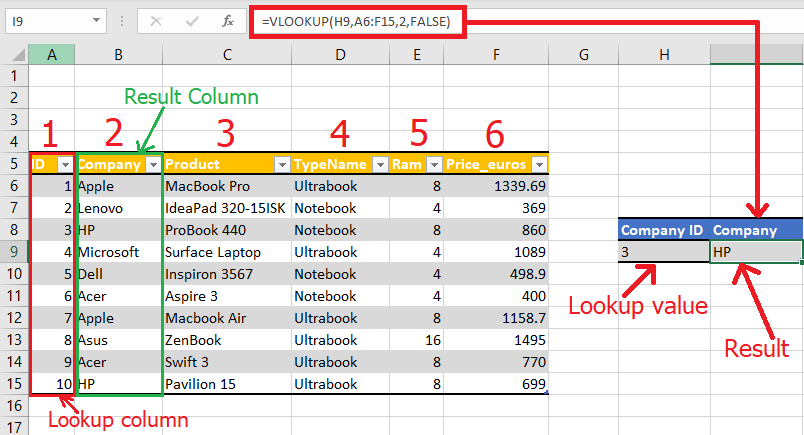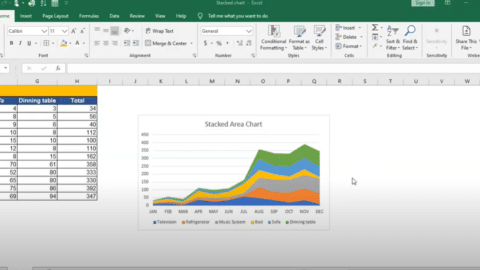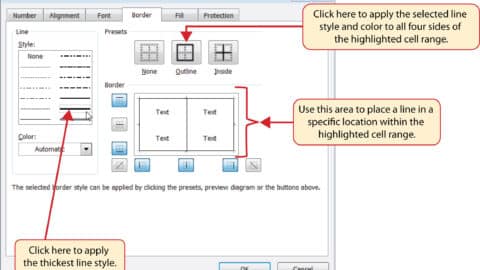Compare Dates in Excel: Tips and Tricks for Efficient Date Comparison
Excel is an incredibly powerful tool for organizing, analyzing, and visualizing data. Excel makes it easy to compare and analyse your information, whether you’re working with financial data, sales data, or any other type of data. What is the formula to compare dates in excel? One of the most common tasks in Excel is comparing dates. This can be a tricky task, especially if you’re dealing with large datasets. Fortunately, Excel offers a formula to compare dates in Excel, making it easy to compare and analyze date-related information.
Table of Contents
Why Compare Dates in Excel?
Excel is an incredibly versatile program that can be used for various purposes, including data analysis, budgeting, and project management. One common task you may need to perform in Excel is comparing dates. This could be for several reasons, such as:
- Comparing sales figures from different periods
- Analyzing the progress of a project over time
- Identifying patterns or trends in data
Regardless of the reason, comparing dates in Excel can be a daunting task, especially if you are dealing with large amounts of data. Fortunately, there are several techniques you can use to make the process easier and more efficient.

Compare Dates in Excel
Using Conditional Formatting to Highlight Differences
One of the easiest ways to compare dates in Excel is to use conditional formatting to highlight any differences between two or more dates. To do this, select the cells containing the dates you want to compare, and then choose “Conditional Formatting” from the “Home” tab on the Excel ribbon. From there, you can choose a formatting option that highlights any cells that meet certain criteria, such as cells that contain dates that are earlier or later than a specific date.
Using the DATEDIF Function
Another useful technique for comparing dates in Excel is to use the DATEDIF function. This function calculates the difference between two dates in a variety of units, such as days, months, and years. For example, if you have two dates in cells A1 and B1, you can use the following formula to calculate the number of days between them:
=DATEDIF(A1,B1,”d”)
This formula will return the number of days between the two dates. You can change the “d” to “m” or “y” to calculate the number of months or years between the dates, respectively.
Using the IF Function to Compare Dates
If you want to compare two dates and determine whether they are the same, earlier or later than each other, you can use the IF function. This function evaluates a logical test and returns one value if the test is true and another if the test is false. For example, if you have two dates in cells A1 and B1, you can use the following formula to determine if the date in cell A1 is earlier, later, or the same as the date in cell B1:
=IF(A1<B1,”Earlier”,IF(A1>B1,”Later”,”Same”))
This formula will return “Earlier” if the date in cell A1 is earlier than the date in cell B1, “Later” if the date in cell A1 is later than the date in cell B1, and “Same” if the two dates are the same.

Compare Dates in Excel
Using PivotTables to Analyze Date Data
If you have a large dataset containing multiple dates, you may find using PivotTables to analyze the data helpful. PivotTables are a powerful Excel tool that allows you to summarize and analyze data in various ways. To create a PivotTable, simply select the data you want to analyze, and then choose “PivotTable” from the “Insert” tab on the Excel ribbon. From there, you can choose how you want to summarize and analyze the data, such as by date, by month, or by year.
Formula to Compare Dates In Excel
Excel has several functions that allow you to compare dates, depending on the specific comparison you want to make. Here are some examples:
- To compare if two dates are equal, use the “=” operator. For example, if your dates are in cells A1 and B1, you can use the formula “=A1=B1” to return TRUE if they are equal and FALSE if not.
- To compare if one date is greater than another, use the “>” operator. For example, if your dates are in cells A1 and B1, you can use the formula “=A1>B1” to return TRUE if A1 is greater than B1, and FALSE if not.
- To compare if one date is less than another, use the “<” operator. For example, if your dates are in cells A1 and B1, you can use the formula “=A1<B1” to return TRUE if A1 is less than B1, and FALSE if not.
- To compare if one date is greater than or equal to another, use the “>=” operator. For example, if your dates are in cells A1 and B1, you can use the formula “=A1>=B1” to return TRUE if A1 is greater than or equal to B1 and FALSE if not.
- To compare if one date is less than or equal to another, use the “<=” operator. For example, if your dates are in cells A1 and B1, you can use the formula “=A1<=B1” to return TRUE if A1 is less than or equal to B1 and FALSE if not.
Note that when comparing dates in Excel, it’s important to ensure the cells containing the dates are formatted as date values. If they are not, Excel may treat them as text, and the comparison may not work as expected.
Tips and Tricks for Efficient Date Comparison in Excel
- Use date functions: Excel has many built-in date functions that can help you perform date comparisons more efficiently. For example, you can use the DATE function to create a date, the YEAR function to extract the year from a date, the MONTH function to extract the month, and the DAY function to extract the day.
- Use date formatting: When working with dates in Excel, it is important to use the correct date formatting to ensure that Excel recognizes the cell content as a date. To format a cell as a date, select the cell or range of cells, right-click, and select Format Cells. Then choose the desired date format.
- Use logical operators: Excel allows you to use logical operators such as greater than (>), less than (<), equal to (=), greater than or equal to (>=), and less than or equal to (<=) to compare dates. For example, you can use the formula =A2>B2 to check if the date in cell A2 is greater than the date in cell B2.
- Use the TODAY function: The TODAY function returns the current date. You can use this function in a formula to perform date comparisons relative to the current date. For example, you can use the formula =A2>TODAY() to check if the date in cell A2 is in the future.
- Use the DATEDIF function: The DATEDIF function calculates the difference between two dates in years, months, or days. You can use this function to perform more complex date comparisons. For example, you can use the formula =DATEDIF(A2,B2,”d”) to calculate the number of days between the dates in cells A2 and B2.
By following these tips and tricks, you can perform date comparisons more efficiently in Excel.
Bullet Points:
- Dates in Excel are represented as numbers.
- Excel offers a variety of date formatting options.
- Common date functions in Excel include TODAY(), MONTH(), YEAR(), and DATE().
- The formula to compare dates in Excel is =A1>B1, where A1 and B1 are the cells containing the dates you want to compare.
- Operators such as <, >, <=, and >= can be used to compare dates in Excel.
- Functions such as IF() and COUNTIF() can be combined with the formula to compare dates in Excel.
- Tips for using the formula include converting text dates to Excel dates, using named ranges, and using conditional formatting to highlight date ranges.
If you liked this article, don’t forget to comment and read our other Excel tutorials!
People Also Ask:
-
How do I compare two dates in Excel?
- To compare two dates, you can use simple comparison operators like
=,>,<,>=,<=. For example, if you have two dates in cells A1 and B1, the formula=A1>B1will return TRUE if the date in A1 is later than the date in B1.
- To compare two dates, you can use simple comparison operators like
-
How do you check if a date is greater than another date in Excel?
- Use the
>operator. If A1 and B1 are your date cells,=A1>B1will check if the date in A1 is greater than the date in B1. It will return TRUE if it is and FALSE otherwise.
- Use the
-
How can I compare two dates?
- For a basic comparison to see if two dates are equal, you would use the
=operator, like=A1=B1. This will return TRUE if the dates are the same.
- For a basic comparison to see if two dates are equal, you would use the
-
How do I calculate the difference between two dates in Excel?
- To calculate the difference between two dates in terms of days, you can simply subtract one date from the other. For example,
=B1-A1will give the number of days between the dates in A1 and B1.
- To calculate the difference between two dates in terms of days, you can simply subtract one date from the other. For example,
-
What is the formula for subtracting dates in Excel?
- The formula for subtracting dates to find the difference in days is
=End_Date - Start_Date. For example, if your start date is in A1 and the end date is in B1, the formula=B1-A1will give you the difference in days.
- The formula for subtracting dates to find the difference in days is
-
What is the formula for the difference between two dates in sheets?
- In Google Sheets, the formula to find the difference between two dates is similar to Excel. You can use
=B1-A1for a simple day difference. For more complex differences, like in years, months, or a combination, you can use theDATEDIFfunction, similar to Excel. For example,=DATEDIF(A1, B1, "Y")will give the difference in years between two dates.
- In Google Sheets, the formula to find the difference between two dates is similar to Excel. You can use
Hello, I’m Cansu, a professional dedicated to creating Excel tutorials, specifically catering to the needs of B2B professionals. With a passion for data analysis and a deep understanding of Microsoft Excel, I have built a reputation for providing comprehensive and user-friendly tutorials that empower businesses to harness the full potential of this powerful software.
I have always been fascinated by the intricate world of numbers and the ability of Excel to transform raw data into meaningful insights. Throughout my career, I have honed my data manipulation, visualization, and automation skills, enabling me to streamline complex processes and drive efficiency in various industries.
As a B2B specialist, I recognize the unique challenges that professionals face when managing and analyzing large volumes of data. With this understanding, I create tutorials tailored to businesses’ specific needs, offering practical solutions to enhance productivity, improve decision-making, and optimize workflows.
My tutorials cover various topics, including advanced formulas and functions, data modeling, pivot tables, macros, and data visualization techniques. I strive to explain complex concepts in a clear and accessible manner, ensuring that even those with limited Excel experience can grasp the concepts and apply them effectively in their work.
In addition to my tutorial work, I actively engage with the Excel community through workshops, webinars, and online forums. I believe in the power of knowledge sharing and collaborative learning, and I am committed to helping professionals unlock their full potential by mastering Excel.
With a strong track record of success and a growing community of satisfied learners, I continue to expand my repertoire of Excel tutorials, keeping up with the latest advancements and features in the software. I aim to empower businesses with the skills and tools they need to thrive in today’s data-driven world.
Suppose you are a B2B professional looking to enhance your Excel skills or a business seeking to improve data management practices. In that case, I invite you to join me on this journey of exploration and mastery. Let’s unlock the true potential of Excel together!
https://www.linkedin.com/in/cansuaydinim/


![Mastering Data Management in Excel: VLOOKUP With MATCH [2024]](https://www.projectcubicle.com/wp-content/uploads/2024/02/VLOOKUP-With-MATCH-2024-480x270.png)







